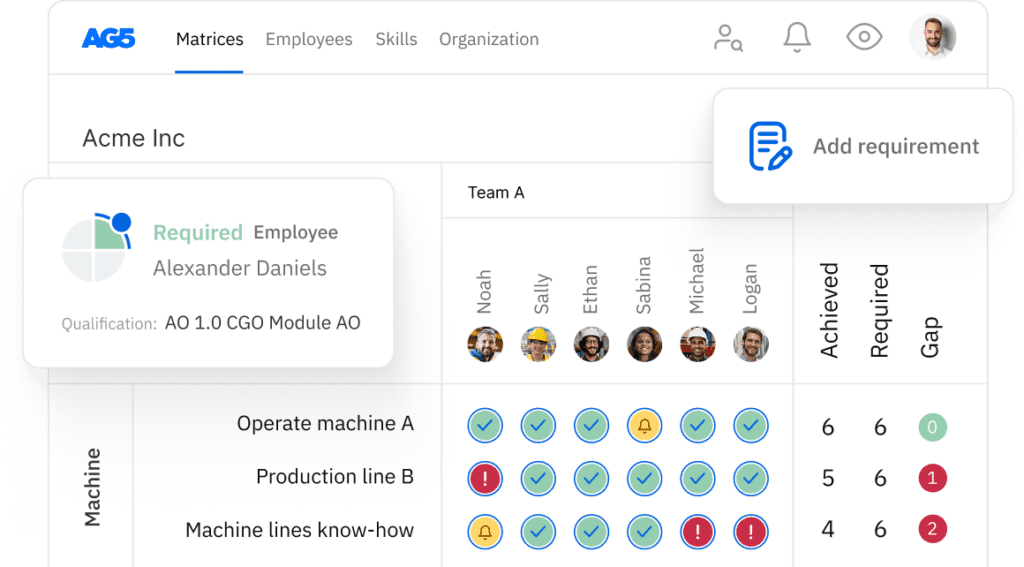Operational excellence: Increase your return on investment
In this article, we discuss operational excellence and its impact on increasing return on investment (ROI). It explores strategies and practices to optimize operations and maximize organizational efficiency and profitability.

You’ve heard the saying, “You can’t manage what you don’t measure.” But, how do you know where to start when it comes to improving your operations? Getting a handle on your company’s performance can be challenging, especially if you’re unsure where to begin. Without accurate measurements, you might be making decisions based on inaccurate assumptions or hunches. Operational excellence is all about improving your return on investment.
By measuring and tracking key performance indicators (KPIs), you can identify areas of improvement and make changes that will impact your business. In this article, we’ll explore operational excellence, discuss its importance, and share some key strategies you can use to improve your organization’s performance.
What is operational excellence?Copied
The goal of operational excellence is always to enhance customers’ satisfaction while simultaneously reducing costs. This could involve anything from streamlining processes to maximizing efficiency and reducing waste. Of course, achieving operational excellence is no easy feat. It requires a commitment from leadership and a willingness to constantly experiment and learn from failures which could bring great rewards. Organizations that embrace operational excellence enjoy increased profitability, higher levels of customer satisfaction, and employees who are more engaged and invested in their work. In short, operational excellence is well worth the effort for any organization aiming to sustain long-term success.
Why is operational excellence important?Copied
There are many reasons for operational excellence being essential for organizations. Perhaps the most important reason is that it leads to improved financial performance. When implemented correctly, operational improvements can help you increase revenue and reduce expenses simultaneously. This allows you to reinvest those savings into other business areas, further increasing the growth. Additionally, operational improvements often lead to increased levels of customer satisfaction. Your customers will notice and appreciate the difference when your processes are more efficient and effective. This can lead to repeat business and positive reputation for your organization. Finally, operational improvements can also lead to increased employee engagement. When employees observe that their company is constantly improving and becoming more efficient, they are more likely to be engaged in their work and invested in the organization’s success.
What are the five elements of operational excellence?Copied
Operational excellence cannot be achieved without all five elements working together. Let’s take a closer look at each one of them.
- Vision. The first step to achieving operational excellence is establishing a clear vision for your organization—setting ambitious yet achievable goals that everyone in the organization can rally behind. Once you have a vision, it must be effectively communicated to all employees to understand its importance and how to achieve it. Furthermore, your vision should be updated regularly to ensure it remains relevant and achievable.
- Structure. The second element of operational excellence is a structure which refers to how your organization is set up to achieve its goals. It includes things like job descriptions, departmental responsibilities, and organizational charts. A well-defined structure is essential because it ensures that everyone in the organization knows their role and how they can contribute to the company’s success. Furthermore, a good structure can help improve communication and collaboration between departments, leading to more effective decision-making.
- People. Of course, no organization can function without its people; hence, the third element of operational excellence is people. This refers to both the employees and the leadership of your organization. To achieve operational excellence, you need to have the right people, which means hiring skilled and knowledgeable employees in respective departments. Furthermore, cultivating a culture of continuous learning is essential to ensure the continued professional development of your employees. Additionally, you need persuasive leaders who can provide guidance and direction for the organization. These leaders should be able to inspire and motivate employees to achieve desired goals.
- Principles. The fourth element of operational excellence is principles. This refers to the guiding principles your organization follows for decision-making and should be aligned with your company’s vision and values. Furthermore, they should be communicated to all employees, so everyone knows them. Additionally, these principles should be reviewed regularly to ensure they are still relevant and practical.
- Tools. The final element of operational excellence is tools. This refers to your organization’s systems and processes which must be efficient and effective to achieve operational excellence and desired goals. Furthermore, it would help if you have the right tools and technologies to support those processes. Additionally, you must constantly review and update your techniques and tools to ensure they are still effective.
How to drive operational excellence?Copied
Operational excellence is a journey, not a destination. Therefore, there is no one-size-fits-all solution for implementing it. The best way to achieve operational excellence is to tailor a plan that meets your organization’s specific needs. However, there are some general steps that all organizations can take to get started on the path to achieving operational excellence.
- Define what does operational excellence mean for your organization? The first step is clearly understanding what operational excellence means for your organization and defining the requisite organizational success standards. Furthermore, you need to identify the key performance indicators that you will use to measure progress.
- Create a vision and strategy for operational excellence. Once you clearly understand what operational excellence means for your organization, you need to create a vision and strategy for achieving it. This will require you to establish realistic goals and objectives and to develop a plan for achieving them.
- Implement processes and tools to support your vision and strategy. The next step is to implement processes and tools in-line with your vision and strategy, requiring you to invest in the right technology and infrastructure. Additionally, it would be best to put the right policies and procedures in place.
- Train your employees. It’s essential to train your employees, so they know how to use the new systems and processes. Furthermore, they need to be aware of the organizational goals and objectives and be familiar with the principles guiding your organization.
- 5. Monitor and adjust. The final step is to monitor and adjust your plan as needed. This will require you to review your progress and make changes where necessary regularly. Additionally, it would help to be prepared to adapt your plan as the needs of your organization change.
Operational excellence is an essential element of organizational leadership. You can create a live dynamic plan that will increase your ROI by following these steps.
Best practicesCopied
There are many different ways that you can use to improve your organization’s performance and achieve operational excellence. Some of the most effective ways include:
- Streamlining processes. One of the best ways to improve efficiency and reduce expenses is to streamline your processes. This involves identifying areas where there is waste or unnecessary steps and finding ways to eliminate those inefficiencies. However, this can be a challenge, but it is well worth the effort.
- Automating tasks. Another great way to improve efficiency is to automate more tasks. This could involve using software to automate customer communication to set up automated data entry systems, and there are many ways to do it. Therefore, finding the right solution for your organization is essential.
- Reducing waste. One of the most critical aspects of operational excellence is reducing waste. The 8 wastes in Lean Manufacturing are transport waste which causes pollution, followed by inventory which can include finished products or raw materials sitting on shelves, overproduction, over-processing, and defects caused by workers or machines. Finding ways to reduce waste can free up resources that can be better used elsewhere in your organization.
- Improving communication. Effective communication is essential for any organization but vital for those pursuing operational excellence. This is because good communication helps ensure everyone is on the same page and working towards the same goal. If there are communication gaps, it can lead to frustration, confusion, and wasted time and effort.
- Encouraging innovation. Another critical element of operational excellence is encouraging innovation. This means creating an environment where employees feel comfortable taking risks and experimenting with new ideas. When employees are free to innovate, it can lead to extraordinary breakthroughs to help your organization achieve its goals.
Operational excellence is essential for any organization that aims to succeed in the long term. Pursuing operational excellence can improve your financial performance, increase customer satisfaction, and engage your employees. If you’re serious about taking your organization to the next level, then operational excellence is what you need to pursue.
AG5 skills management software
AG5 Skills Management software can help you implement operational excellence by mapping skills and competencies, assessments, and automated reports.
Learn more about how AG5 can help you achieve operational excellence.

